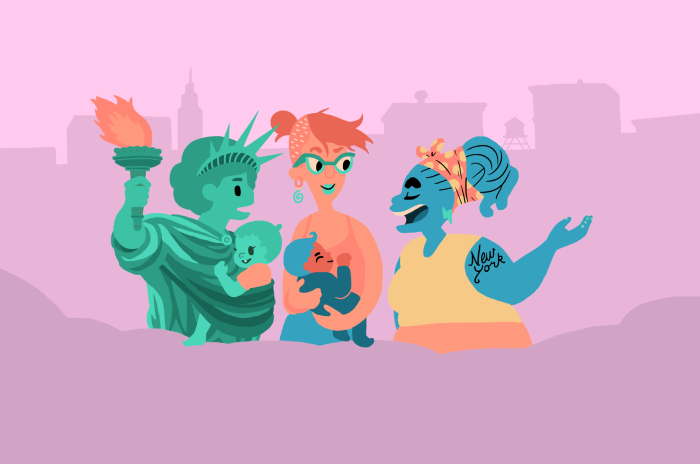
“John just took my train! I had it first.”
How many times do our children run up to us to share a grievance toward another child? Generally these complaints involve rules that have been broken. We spend a lot of time teaching our kids “the rules” — use your inside voice, share your toys with your friends, keep your hands to yourself, etc. The list goes on. It’s natural for a child (and even us adults) to want to call attention to perceived rule breaking, but “Do not tattle” can also become a new rule for your child to follow.
Why rules work
Rules are important because kids tend to be egocentric, focused on their own experiences and perspectives. It can be difficult for a young child to put himself in another child’s shoes and think about the way his actions affect that child.
For this reason, it’s much more effective to tell your young son that he needs to let his friend have a turn using his toy rather than explaining to him that his friend is feeling disappointed because he’d like a turn. Even though your child may see that John is upset that he hasn’t had a chance to play with the toy, he will more easily understand that John should get a turn because sharing is the rule.
So, until your child begins to develop empathy skills, guidance and rules are the most effective methods of keeping order. Tattling can become one of those rules, even if it’s a tricky one to master.
Why kids tattle
Rules work well with young children because their cognitive and moral development allows for mastering a set of simple instructions, and they are motivated to receive praise from adults for following them. For these reasons, kids usually believe it’s the right thing to do to tattle on kids who break the rules. Kids may even think that they are being helpful when they tattle, and might expect praise for it. Tattling is a natural response to learning about rules, but your child can learn that it is not necessary in every rule-breaking situation.
Keep in mind too that sometimes children tattle for other reasons beyond rule breaking, such as getting attention from grownups or because they want a peer to get in trouble. This leads to a complicated situation: Children need an explicit rule not to tattle on other children … and an understanding that we do want them to report some rule violations to adults. We should always keep in mind how illogical this may seem to young children when we start thinking a child should intuitively know when to tell and when not to tattle.
When is it tattling?
A child who has been drilled to follow rules takes them very seriously, leading them to tattling on friends and siblings no matter how minor the misbehavior. However, there are some simple ways to help your child understand the difference between tattling and alerting a grownup when an important rule is being broken.
1. Understand the difference
Tattling is reporting a peer’s wrongdoing, when the situation is safe and the child can handle it herself.
Telling is alerting adults that the situation is not safe and/or your child needs help managing the situation.
Tattling to get a peer in trouble can be mean-spirited.
Telling to protect a peer from harm is civic-minded or showing concern for others.
2. Give children tools and words
Children may be able to solve a minor problem themselves if they can identify the problem and use their words effectively to express their frustrations. As situations arise, help him or her figure out ways to approach a similar situation in the future. For example, if your child is being rushed at the water fountain, he can say, “It’s my turn” to the child who is being impatient. If someone calls his friend an unkind name, he can say, “That’s my friend. Don’t talk to him like that!” But if it keeps happening, or the bully is a bigger kid or is being scary, then it’s time to tell the teacher.
3. Give concrete examples
Tattling: “He touched my lunchbox!”
Telling: “She took my lunch!”
Tattling: “She took one of the blocks I wanted to use!”
Telling: “He pushed the block tower on top of me!”
In the tattling examples, neither scenario caused an unsafe situation and might have been solved if children used their words to talk through the problem. However, in both of the telling examples, there is potential for a harmful situation that would best be resolved by an adult – making sure each child was able to eat lunch and making sure no one was hurt from a falling block tower.
4. Give reminders
The first few times a child tattles, grownups should gently remind children of the difference between tattling and telling: tattling is not necessary, but telling is. “If someone is about to be hurt, tell me. If no one is being hurt, try to work it out among yourselves.”
When children are young, tattling behavior can be effectively shaped by adults’ responses to the tattling. A child who tattles can be reminded that the perceived rule breaking harmed no one and to return to play, whereas a child who tells can be rewarded for looking out for his peers. As children get older and continue developing social skills, they’ll begin to use these social and problem-solving skills to avoid tattling, but also understand that being a good friend means involving adults when more help is needed.
By Jamie M. Howard, PhD, a clinical psychologist in the Anxiety and Mood Disorders Center and the director of the Trauma and Resilience Service at the Child Mind Institute.



